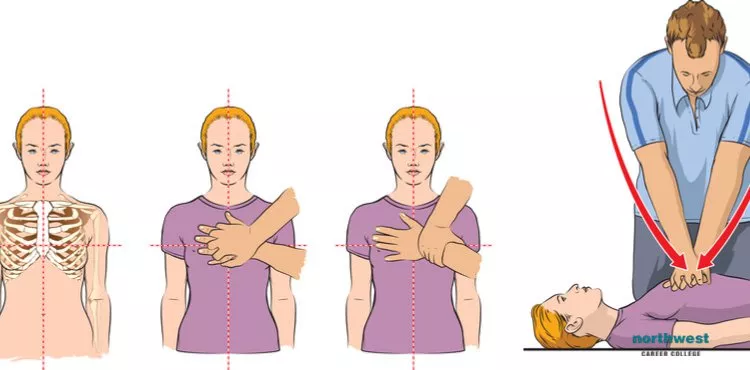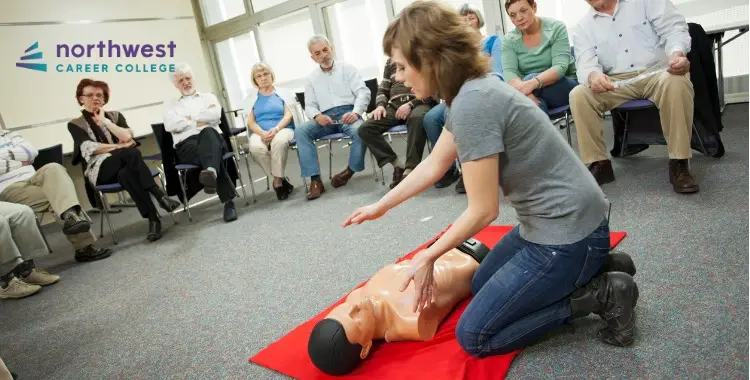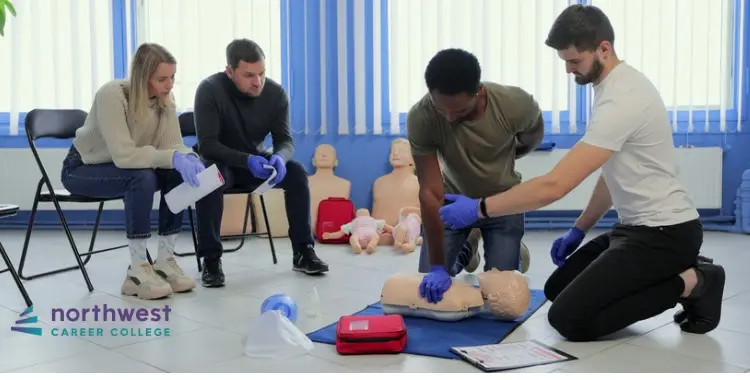How Does CPR Work?
- CPR
- January 13, 2025
- 5.7k views
- 3 min read

With the rising prevalence of CPR courses, both voluntary and as part of mandatory work health and safety training, millions of people across the U.S. have been educated in how to perform cardiopulmonary resuscitation. Assistance by those trained in CPR can increase a victims chances of survival by more than 40%, especially in the case of those suffering from sudden cardiac arrest, the leading cause of death in U.S. adults. So, how does CPR actually work, and why can it have such a radical effect on a victim’s chance of survival.
Table of Contents
Timely Intervention
Nearly 900 Americans die every day because of sudden cardiac arrest. Nearly 383,000 of such episodes occur outside hospitals each year, 88 percent of them at home. The victim of sudden cardiac arrest collapses suddenly, becomes unresponsive and stops breathing.
Sudden cardiac arrest is caused by the heart’s electrical system malfunctioning, sending out irregular signal to the heart muscle that leaves it unable to pump blood. After the heart stops beating the victim has around four minutes before damage to the brain begins to occur. It is at this point that quick application of CPR is vital, as around 95 percent of people in sudden cardiac arrest die before reaching the hospital, with a victim’s chances of survival falling by seven to ten percent for every minute the heart fails to pump.
When encountering a person who has collapsed and is unresponsive, and after yelling for another bystander to call 911, those trained in CPR administer rapid, forceful chest compressions to the victim until medical help arrives. In some cases an automated external defibrillator can be used to shock the heart back into its normal rhythm.
The suggested technique by the American Heart Association for applying CPR is as follows:
- Put one hand over the other, with fingers entwined, place them in the center of the chest between the victim’s nipples.
- Press down hard and fast. Each compression should depress the chest by about two inches and should be repeated about 100 times a minute.
- The chest should be allowed to rise up momentarily between compressions to allow the heart and lungs to refill.
- When providing breaths, the victim’s head should be tilted back to open the airway. For children older than 1 and for adults, the victim’s nose should be pinched and the mouth completely covered by the mouth of the rescuer, who should observe the chest rising with each rescue breath.
- For an infant, the rescuer’s mouth should completely cover the baby’s nose and mouth.
- The current recommendation is to start with 30 chest compressions (at a rate of 100 a minute) followed by two one-second breaths, repeating this sequence until help arrives.
By compressing the chest and breathing into the victims mouth, those administering CPR force air into the lungs and, critically, force blood to flow around the body, re-oxygenating the brain. A common way of maintaining the required rhythm of the compressions is to sync your movements to the Bee Gees song “Stayin’ Alive.”
Free CPR Courses
Here at Northwest Career College we are committed to providing affordable, quality CPR Classes to the Las Vegas community. We pride ourselves on being an American Heart Association (AHA) testing center and we offer Las Vegas CPR classes designed to fit your personal needs and professional schedule. As part of our “student-focussed” approach to education we also off our CPR classes free of charge to all of our students. Call us today on (702) 403-1592 to book your CPR class and become qualified to save a life in just 4 hours!




